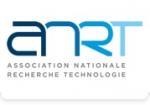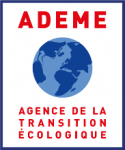Croissance et caractérisation de l’AlScN : un nouveau matériau prometteur pour les dispositifs piézoélectriques et ferroélectriques // Growth and Characterization of AlScN: A New Promising Material for Piezoelectric and Ferroelectric Devices
| ABG-133857 | Sujet de Thèse | |
| 16/10/2025 | Financement public/privé |
CEA Université Grenoble Alpes
Grenoble
Croissance et caractérisation de l’AlScN : un nouveau matériau prometteur pour les dispositifs piézoélectriques et ferroélectriques // Growth and Characterization of AlScN: A New Promising Material for Piezoelectric and Ferroelectric Devices
- Physique
Physique du solide, surfaces et interfaces / Physique de l’état condensé, chimie et nanosciences / Electronique et microélectronique - Optoélectronique / Sciences pour l’ingénieur
Description du sujet
Les semi-conducteurs III-nitrures — GaN, AlN et InN — ont révolutionné le marché de l’éclairage et pénètrent rapidement le secteur de l’électronique de puissance. Actuellement, de nouveaux composés nitrures sont explorés dans la recherche de nouvelles fonctionnalités. Dans ce contexte, le nitrure d’aluminium et de scandium (AlScN) s’est imposé comme un nouveau membre particulièrement prometteur de la famille des nitrures. L’incorporation de scandium dans l’AlN conduit à :
* Des constantes piézoélectriques accrues : ce qui rend l’AlScN très attractif pour la fabrication de générateurs piézoélectriques et de filtres SAW/BAW à haute fréquence.
* Une polarisation spontanée augmentée : cette polarisation renforcée peut être exploitée dans la conception de transistors à haute mobilité électronique (HEMTs) présentant une densité de charge très élevée dans le canal.
* La ferroélectricité : la découverte récente (2019) de propriétés ferroélectriques ouvre la voie au développement de nouvelles mémoires non volatiles.
Au cours des cinq dernières années, l’AlScN est devenu un sujet majeur de recherche, présentant de nombreuses questions ouvertes et de passionnantes perspectives à explorer.
Cette thèse de doctorat portera sur l’étude de la croissance et des propriétés de l’AlScN et du GaScN synthétisés par épitaxie par jets moléculaires (MBE). Le doctorant sera formé à l’utilisation d’un système MBE pour la synthèse des semi-conducteurs III-nitrures ainsi qu’à la caractérisation structurale des matériaux par microscopie à force atomique (AFM) et diffraction des rayons X (XRD). La variation des propriétés de polarisation du matériau sera étudiée par l’analyse de la photoluminescence de structures à puits quantiques. Enfin, le doctorant sera formé à l’utilisation de logiciels de simulation pour modéliser la structure électronique des échantillons, afin de faciliter l’interprétation des résultats optiques.
------------------------------------------------------------------------------------------------------------------------------------------------------------------------
------------------------------------------------------------------------------------------------------------------------------------------------------------------------
III-nitride semiconductors — GaN, AlN, and InN — have revolutionized the lighting market and are rapidly entering the power electronics sector. Currently, new nitride compounds are being explored in the search for novel functionalities. In this context, aluminum scandium nitride (AlScN) has emerged as a particularly promising new member of the nitride family. Incorporating scandium into AlN leads to:
* Enhanced Piezoelectric Constants: Making AlScN highly attractive for the fabrication of piezoelectric generators and high-frequency SAW/BAW filters.
* Increased Spontaneous Polarization: The enhanced polarization can be exploited in designing high-electron-mobility transistors (HEMTs) with very high channel charge densities.
* Ferroelectricity: The recently discovered (2019) emergence of ferroelectric properties opens up possibilities for developing new non-volatile memory devices.
Over the past five years, AlScN has become a major focus of research, presenting numerous open questions and exciting opportunities to explore.
This PhD thesis will focus on the study of the growth and properties of AlScN and GaScN synthesized by molecular beam epitaxy (MBE). The student will receive training in the use of an MBE system for the synthesis of III-nitride semiconductors and in the structural characterization of materials using atomic force microscopy (AFM) and X-ray diffraction (XRD). The variation of the polarization properties of the materials will be investigated by analyzing the photoluminescence of quantum well structures. Finally, the student will be trained in the use of simulation software to model the electronic structure of the samples, aiding in the interpretation of the optical results.
------------------------------------------------------------------------------------------------------------------------------------------------------------------------
------------------------------------------------------------------------------------------------------------------------------------------------------------------------
Pôle fr : Direction de la Recherche Fondamentale
Département : Institut de Recherche Interdisciplinaire de Grenoble
Service : DEPHY
Date de début souhaitée : 01-10-2026
Ecole doctorale : Ecole Doctorale de Physique de Grenoble (EdPHYS)
Directeur de thèse : MONROY Eva
Organisme : CEA
Laboratoire : DRF/IRIG//PHELIQS
URL : https://www.pheliqs.fr/en/Pages/Eva-Monroy.aspx
URL : https://www.pheliqs.fr/en/Pages/Presentation.aspx
* Des constantes piézoélectriques accrues : ce qui rend l’AlScN très attractif pour la fabrication de générateurs piézoélectriques et de filtres SAW/BAW à haute fréquence.
* Une polarisation spontanée augmentée : cette polarisation renforcée peut être exploitée dans la conception de transistors à haute mobilité électronique (HEMTs) présentant une densité de charge très élevée dans le canal.
* La ferroélectricité : la découverte récente (2019) de propriétés ferroélectriques ouvre la voie au développement de nouvelles mémoires non volatiles.
Au cours des cinq dernières années, l’AlScN est devenu un sujet majeur de recherche, présentant de nombreuses questions ouvertes et de passionnantes perspectives à explorer.
Cette thèse de doctorat portera sur l’étude de la croissance et des propriétés de l’AlScN et du GaScN synthétisés par épitaxie par jets moléculaires (MBE). Le doctorant sera formé à l’utilisation d’un système MBE pour la synthèse des semi-conducteurs III-nitrures ainsi qu’à la caractérisation structurale des matériaux par microscopie à force atomique (AFM) et diffraction des rayons X (XRD). La variation des propriétés de polarisation du matériau sera étudiée par l’analyse de la photoluminescence de structures à puits quantiques. Enfin, le doctorant sera formé à l’utilisation de logiciels de simulation pour modéliser la structure électronique des échantillons, afin de faciliter l’interprétation des résultats optiques.
------------------------------------------------------------------------------------------------------------------------------------------------------------------------
------------------------------------------------------------------------------------------------------------------------------------------------------------------------
III-nitride semiconductors — GaN, AlN, and InN — have revolutionized the lighting market and are rapidly entering the power electronics sector. Currently, new nitride compounds are being explored in the search for novel functionalities. In this context, aluminum scandium nitride (AlScN) has emerged as a particularly promising new member of the nitride family. Incorporating scandium into AlN leads to:
* Enhanced Piezoelectric Constants: Making AlScN highly attractive for the fabrication of piezoelectric generators and high-frequency SAW/BAW filters.
* Increased Spontaneous Polarization: The enhanced polarization can be exploited in designing high-electron-mobility transistors (HEMTs) with very high channel charge densities.
* Ferroelectricity: The recently discovered (2019) emergence of ferroelectric properties opens up possibilities for developing new non-volatile memory devices.
Over the past five years, AlScN has become a major focus of research, presenting numerous open questions and exciting opportunities to explore.
This PhD thesis will focus on the study of the growth and properties of AlScN and GaScN synthesized by molecular beam epitaxy (MBE). The student will receive training in the use of an MBE system for the synthesis of III-nitride semiconductors and in the structural characterization of materials using atomic force microscopy (AFM) and X-ray diffraction (XRD). The variation of the polarization properties of the materials will be investigated by analyzing the photoluminescence of quantum well structures. Finally, the student will be trained in the use of simulation software to model the electronic structure of the samples, aiding in the interpretation of the optical results.
------------------------------------------------------------------------------------------------------------------------------------------------------------------------
------------------------------------------------------------------------------------------------------------------------------------------------------------------------
Pôle fr : Direction de la Recherche Fondamentale
Département : Institut de Recherche Interdisciplinaire de Grenoble
Service : DEPHY
Date de début souhaitée : 01-10-2026
Ecole doctorale : Ecole Doctorale de Physique de Grenoble (EdPHYS)
Directeur de thèse : MONROY Eva
Organisme : CEA
Laboratoire : DRF/IRIG//PHELIQS
URL : https://www.pheliqs.fr/en/Pages/Eva-Monroy.aspx
URL : https://www.pheliqs.fr/en/Pages/Presentation.aspx
Nature du financement
Financement public/privé
Précisions sur le financement
Présentation établissement et labo d'accueil
CEA Université Grenoble Alpes
Pôle fr : Direction de la Recherche Fondamentale
Département : Institut de Recherche Interdisciplinaire de Grenoble
Service : DEPHY
Profil du candidat
Master's degree in Physics or Engineering
Postuler
Fermer
Vous avez déjà un compte ?
Nouvel utilisateur ?
Besoin d'informations sur l'ABG ?
Vous souhaitez recevoir nos infolettres ?
Découvrez nos adhérents
 Nokia Bell Labs France
Nokia Bell Labs France  Laboratoire National de Métrologie et d'Essais - LNE
Laboratoire National de Métrologie et d'Essais - LNE  Généthon
Généthon  Ifremer
Ifremer  ONERA - The French Aerospace Lab
ONERA - The French Aerospace Lab  CASDEN
CASDEN  MabDesign
MabDesign  Groupe AFNOR - Association française de normalisation
Groupe AFNOR - Association française de normalisation  CESI
CESI  Aérocentre, Pôle d'excellence régional
Aérocentre, Pôle d'excellence régional  TotalEnergies
TotalEnergies  Tecknowmetrix
Tecknowmetrix  SUEZ
SUEZ  PhDOOC
PhDOOC  ANRT
ANRT  ASNR - Autorité de sûreté nucléaire et de radioprotection - Siège
ASNR - Autorité de sûreté nucléaire et de radioprotection - Siège  MabDesign
MabDesign  ADEME
ADEME  Institut Sup'biotech de Paris
Institut Sup'biotech de Paris
